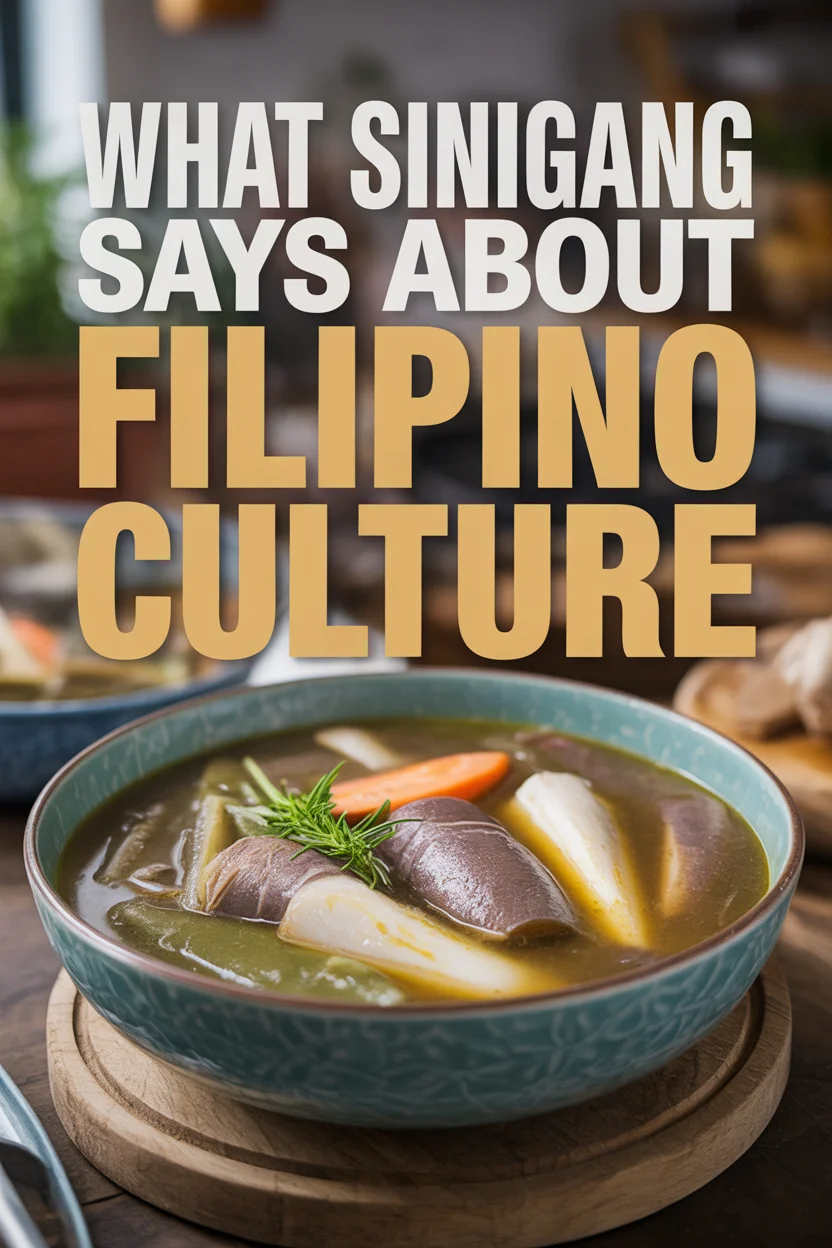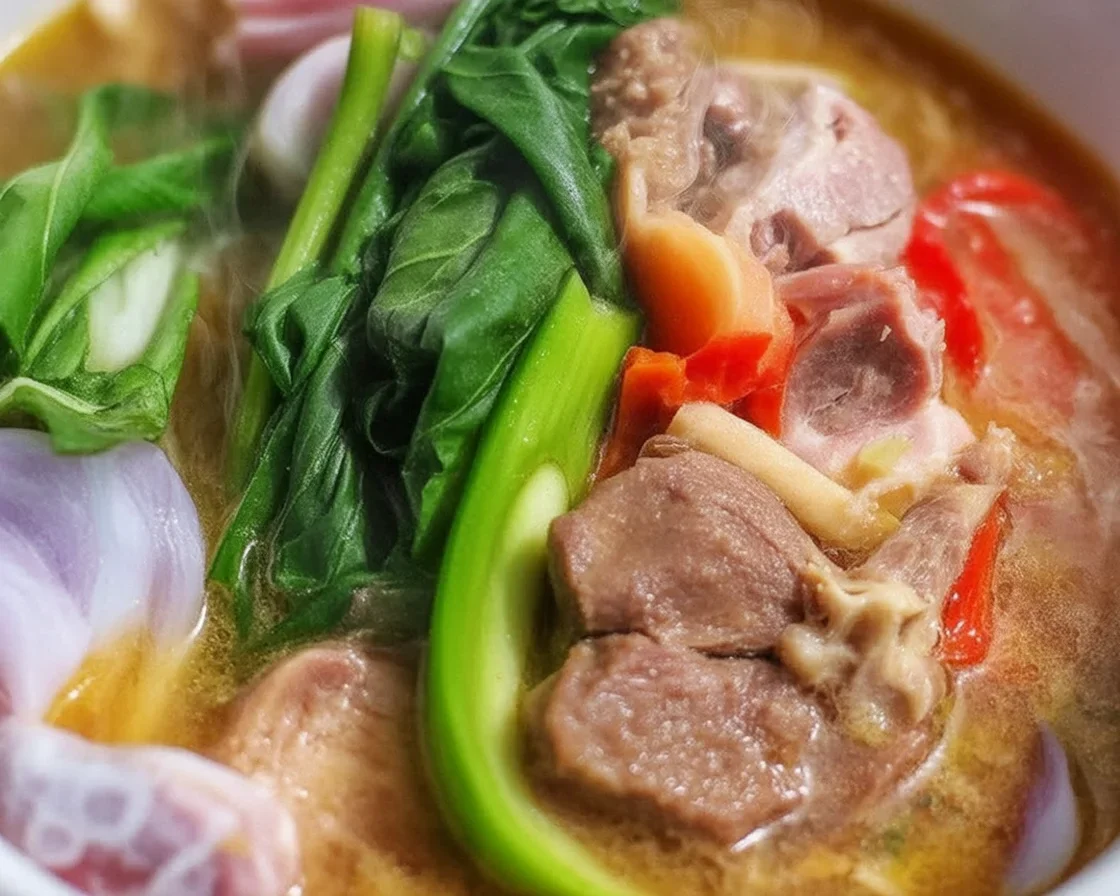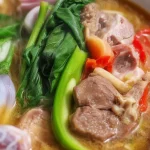You know what gets me every rainy season? Craving that warm, comforting bowl of sinigang. But let’s be real, what sinigang says about Filipino culture goes way beyond it just being a sour soup. It tells a big story about how Filipinos bond, adapt, and even show a little stubbornness in the face of hardship. Sometimes, I’ll find myself missing home and guess what? Boom, one whiff of sinigang simmering in the kitchen, and suddenly the world feels smaller. If you’re curious about food that really says something about its people, well, sinigang is at the heart of it all. Speaking of Filipino classics, check out how the best kakanin recipes capture the same community vibes or see why lechon kawali is the party favorite for big gatherings. Don’t get me started! 
Sinigang meaning
Alright, let’s break it down. Sinigang means “stewed” or sometimes folks say “to stew in sour broth.” More than the translation though, it’s a dish where you taste that signature tart kick from tamarind, calamansi, or even green mango. Ask any Pinoy and they’ll say sinigang brings back memories. For me, it’s a taste that says home—plus a gentle reminder that life isn’t all sweet, but that’s kind of beautiful. It usually shows up on the table when families gather, especially on chill days when the rain just won’t let up. Maybe that’s why I can’t stop talking about it with friends who’ve never had anything like it.
It’s not just pork. Sometimes it’s shrimp, fish, beef—heck, whatever is in the fridge. That just adds to its charm if you ask me. No rules really, just a bowlful of comfort.
“We always cook sinigang when my cousins visit. It’s the only dish everyone likes, no arguments!” — Cara D., Manila
Origins
So, you might be wondering, where did sinigang even come from? Turns out, it’s a bit fuzzy. There’s no big historical announcement or anything. Most people agree it’s super old, a pre-colonial invention—meaning it exists before Spanish influences ever flavored local food. Our ancestors were smart. They used what was plentiful: river fish, local leafy greens, and the wild souring agents growing all over the archipelago. Easy, cheap, filling.
I remember my grandma saying people used to throw whatever vegetables were in season into the pot. That’s resourcefulness for you right there! Think about it: one pot, one fire, everyone gathers round and eats the same thing. Such a clever way to encourage sharing before the “sharing economy” was a thing.
And honestly, not much has changed. Those simple, practical roots help Filipinos everywhere deal with life’s curveballs.
Regional uses
If you ask someone from Luzon or Visayas or Mindanao what sinigang tastes like, you’ll get different answers every single time. That’s one thing I love about it. In southern Luzon, the soup is almost white and tangy, using loads of tamarind. Elsewhere, you might find guava sinigang in Batangas, or the shocking green of miso and mustard greens in Pampanga.
One time I visited a friend in Iloilo and, surprise, their sinigang had green mango in it instead and all sorts of unfamiliar herbs. She laughed at how weird I found it, but hey, by the end of dinner I was totally into it. Regions use what’s available and twist the recipe into something unique. It’s kind of wild how you see local traditions and nature on your dining table this way.
Some local cooks even toss in pineapple or kamias when they run out of tamarind. Talk about rolling with the punches.
Accessibility
You might be thinking making sinigang is tricky, but honestly, it couldn’t be friendlier. Even broke college students can whip it up. Plus: you don’t even need a fancy grocery. Market veggies, basic cuts of meat, and some sort of souring agent, that’s all it takes.
Simple ways to bring sinigang to any table:
- Swap pork for fish or shrimp if you’re cutting red meat
- Use sinigang mix packets if you can’t get fresh tamarind (no shame)
- Toss in whatever veggies you have on hand—kangkong, eggplant, radish, string beans, gabi
- Serve with rice, always. Trust me, it just works
There are classic Filipino soup recipes out there, but sinigang stands out because it’s like the ultimate crowd-pleaser. Doesn’t matter if you’ve cooked for years or just learning your way around the kitchen. You’ll feel like a winner.

Conclusion
So here’s the thing. Sinigang is way more than just an ordinary soup. It’s a living, bubbling slice of Filipino life—resourceful, communal, a bit unpredictable, and always, always comforting. It shows how Filipinos make magic out of simple things, how we gather (and argue) over steaming bowls, and how each home puts its own spin on a timeless favorite.
Got time to dig deeper? You can find fascinating backstories in A taste of tradition: The history and cultural significance of Sinigang …. There’s also a heartwarming look at Filipino togetherness over sinigang in Sinigang For The Soul: Building Community Through ….
So next time you ladle up a bowl of sinigang, just remember: you’re slurping up centuries of flavor, cleverness, and a super proud culture—one sour spoonful at a time.
Sinigang
Ingredients
Main Ingredients
- 1 kg pork (or shrimp, fish, or beef) You can use any protein of your choice.
- 1 liter water For the soup base.
- 500 g tamarind (or souring agent like calamansi or green mango) Use fresh or powdered form.
- 200 g kangkong (water spinach) A common vegetable in sinigang.
- 1 piece radish Sliced.
- 1 piece eggplant Sliced.
- 100 g string beans Trimmed.
- 2 pieces tomatoes Quartered.
- 1 piece onion Sliced.
- 2 tablespoons fish sauce For seasoning.
Instructions
Preparation
- In a pot, bring water to a boil and add the pork (or your choice of protein).
- Once boiling, add the onion, tomatoes, and radish. Cook until tender.
- Add the tamarind or chosen souring agent and let it simmer to extract flavor.
Cooking
- Incorporate the eggplant, string beans, and fish sauce into the pot.
- Finally, add the kangkong and cook for another 3-5 minutes.
- Season with more fish sauce if needed, then serve hot with rice.


1 thought on “What Sinigang Says About Filipino Culture”